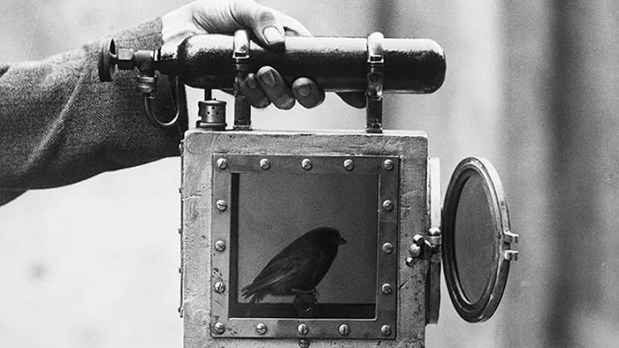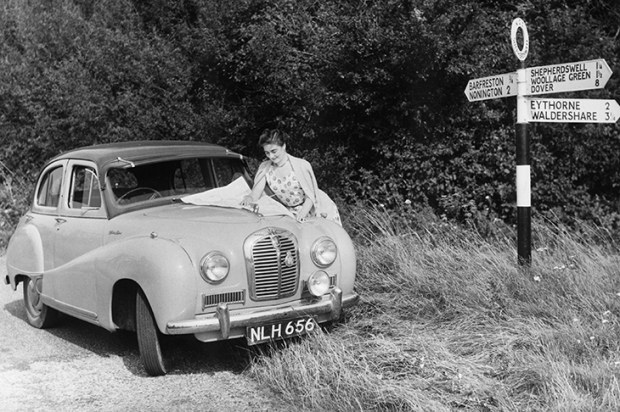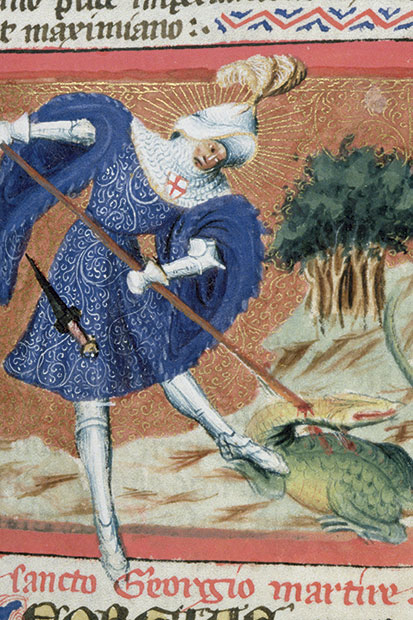Robert Cumming’s opening sentence is: ‘Kenneth Clark and Bernard Berenson first met in the summer of 1925.’ One is then transported to terraces of cypress and statuary, sunshine and high art, Edith Wharton and Paul of Yugoslavia cooing over a balustrade. Clark was 22 and had just finished at Oxford; he was ‘doing’ Italy with Charles Bell, Keeper of Fine Art at the Ashmolean. Lunch at I Tatti, Berenson’s citadel of aesthetic endeavour near Florence, was arranged. By the end of it, Clark had been taken on as Berenson’s assistant for the revision of the master’s classic The Drawings of the Florentine Painters.
Cumming tweaks the myth:
Clark’s youthful self-assurance and aloofness would not have been a discouragement for Berenson: aloofness was one of his own notable characteristics. Equally, the rich, the well-bred and the good-looking held a perpetual fascination for him, as did clever, articulate, Oxford-educated Anglo-Saxons.
Clark was indeed rich — his family had invented cotton reels — but he was not good-looking. Nor was Berenson aloof: when not working, he was intensely gregarious and received countless guests at I Tatti, which Cumming rightly describes as ‘a 20th-century version of a Renaissance humanist court.’ It was financed by Berenson’s authentication work with the dealer Joseph Duveen in the golden age of the old-master market.
When he took on Clark, Berenson was 60. He was not homosexual but his close male friends had been. Otherwise all his close friendships were with women. This would never be Clark’s milieu, and in a sense their lengthy correspondence was a substitute for a friendship which didn’t happen. Clark soon returned to London, became married with children, and rapidly forged an independent career. He was gifted in his own right, but it was his association with Berenson which kick-started him in the art world. By 1934 Clark was both Director of the National Gallery and Surveyor of the King’s Pictures: he became a committee man, wedded to public service. Berenson never had an official appointment in his life — which contributed to his magic.
Their correspondence is characterised by regret — that they are both so busy that they can’t meet more often — and by effusive self-deprecation and compliments which are also signs of insecurity. Though couched in the most amiable terms, with constant enquiries about each other’s familiars, the correspondence never quite leaves the salone and is mostly a professional exchange on points of artistic judgment. This has a lepidopteral fascination all its own, but when you dip into the background you can see how wary and Machiavellian the letters sometimes are. Money and sex are never mentioned. There’s little gossip. Clark writes for example, ‘We have had the poet Yeats here’ — and that’s it. Beneath the flourishes both men are tough, and there are moments of barbed obsequiousness; I wish there were more. Despite their 34-year association, only one photograph exists of them together.
Berenson, much the warmer of the two, bursts out in October 1937: ‘If there is anything I now crave for it is your affection . . . What comes in between you and me?’ Clark replies: ‘I come of an undemonstrative family and my feelings are as stiff as an unused limb.’ When Clark does let go, the effect can be peevish: ‘We have been away in Paris where the social atmosphere is detestable.’ The letters between Berenson and Jane Clark, also included here, are far more relaxed and revealing.
The art world is completely trans-national and the approach of war adds an awful vibration to the correspondence, which then ceases in 1939 for six years. Berenson, refusing to part from the two women in his life, courageously stayed on. He was besieged at I Tatti and the German occupation drove him into hiding (he was Jewish). With peacetime he emerged as a god of humanism, his boyish joie de vivre intact.
After the war Clark became chairman of the new Independent Television Authority and later a television personality in his own right, while Berenson’s preferred English correspondent was Hugh Trevor-Roper, whose letters, published in 2006, are electrifying in comparison to Clark’s. Berenson’s to both men are charming, relatively brief, full of practical requests — he had a gift for goading much longer responses from his numerous contacts.
On Berenson’s 90th birthday Clark’s manner softens a little: ‘I send you my love as a son and a dear friend.’ But he did not go to the old boy’s funeral in 1959. Instead he wrote an article for the Sunday Times. In it Clark disparaged Berenson’s writings but celebrated his importance as an exemplar from whom his disciples ‘learnt, in Johnson’s immortal phrase, to suspect “the cant of those who judge by principles rather than perception” ’. Berenson did not have Clark’s beautiful prose style, but he had more depth and bite and was an original, whereas Clark curated the originality of others.
Both men are blessed on this occasion in having Robert Cumming as editor. His apparatus is superbly thorough and the footnotes salvage many a dull reference. In giving us rather more than we need, Cumming confers amplitude and completeness upon his project.
Got something to add? Join the discussion and comment below.
Get 10 issues for just $10
Subscribe to The Spectator Australia today for the next 10 magazine issues, plus full online access, for just $10.
Available from the Spectator Bookshop, £22. Tel: 08430 600033
You might disagree with half of it, but you’ll enjoy reading all of it. Try your first month for free, then just $2 a week for the remainder of your first year.














Comments
Don't miss out
Join the conversation with other Spectator Australia readers. Subscribe to leave a comment.
SUBSCRIBEAlready a subscriber? Log in